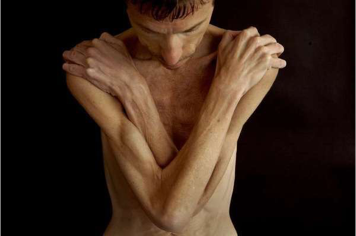Eating Disorders : Social problem born out of social FADS?
When a reed-thin Kate Moss appeared on a controversial Calvin Klein jeans ad in 1992, the world was hooked. Size zero was a thing. Every woman felt overweight in their skin. But then the world of fashion saw the championing of curvy models and they eventually moved on to Gigi Hadid.
But not everyone did. Losing weight started out as a way to shed off extra kilos, stay healthy and look good, but it soon became an obsession that took to extreme levels. This obsessive behavior led to what are known as eating disorders. The common types of eating disorders, anorexia nervosa, bulimia nervosa, and binge-eating disorder are real, treatable medical illnesses, and are not to be confused with “dieting”. They can be identified by serious disturbances in eating behavior and weight regulation, that can start with eating less or more amounts of food but the tendency can soon go out of control.
Here are some scary facts about eating disorders:
- They frequently coexist with other illnesses such as depression, substance abuse, or anxiety disorders.
- The mortality rate for people with eating disorders is the highest of all psychiatric illnesses.
- Although eating disorders affect both genders, rates among women and girls are 2.5 times higher than among men and boys.
- The problem mostly manifests during the teen years or young adulthood but may also develop before or after that age range.
- Only about 10% of people with eating disorders receive treatment, and out of them only 35% get treated from specialized facilities.
Detect eating disorders!
Since this is a behavioral disorder with respect to eating, it is easy to overlook the problem as a bad habit instead of acknowledging it as a medical ailment. The following are the different types and symptoms of eating disorders:
Anorexia nervosa
People suffering from this disorder consider themselves overweight even when they are underweight. They eat selectively and in very small portions, repeatedly weighing them. They may also binge eat and later compensate the same with dieting and exercising in extreme levels or with self-induced vomiting and misuse of laxatives, diuretics, or enemas.
Symptoms:
- Extremely low body weight
- Severe control on eating habits
- Obsession over staying thin at the cost of health
- Constant anxiety over gaining weight
- Irrational lack of self esteem over one’s body shape and weight
- Lack of menstruation among girls and women
Some additional symptoms appear if the condition goes untreated considerably long:
- Thinning of the bones (osteopenia or osteoporosis)
- Brittle hair and nails
- Dry and yellowish skin
- Growth of fine hair all over the body (lanugo)
- Mild anemia, muscle wasting, and weakness
- Low blood pressure, or slow pulse and breathing
- Damage to the structure and function of the heart
- Brain damage
- Damaged functioning of the liver
- Multi-organ failure
- Infertility
- Peripheral oedema
- Hypokalemia
Bulimia nervosa
This type of disorder is characterized by a cyclic habit of a rapid intake of large quantities of food followed by self-induced vomiting or extreme dieting and exercising or abuse of laxatives and diuretics or all of these, in a bid to prevent weight gain.
- Symptoms
- Binge eating, both periodically, as well as under emotional stress
- Purging
- Irregular menstruation
- Frequent weight fluctuations
- Depression and mood swings
- Anxiety over body shape and weight
- Guilt/shame over eating habits
Due to the punishing behavior of vomiting and use of laxatives associated with bulimia, the following complications may also develop over time:
- Cardiac arrhythmias
- Renal impairment from hypokalemia
- Muscular paralysis
- Urinary infection epileptic seizures
- Swollen salivary glands
- Eroded dental enamel
Binge eating disorder
As the name implies, people suffering from this disorder indulge in excessive overeating. However, here the binge eating is not compensated with vomiting or excessive dieting or exercising, as seen in the case of Bulimia, and so patients are usually overweight or obese. There is also a feeling of guilt and shame involved over this habit of overeating, which in turn leads to more binge eating.
Nutritional counseling to the rescue!
Eating disorders are now a social health problem in the sense that there are more people suffering from them than we know, and because some of the symptoms can hardly be differentiated from the general pattern of behavior. Complete recovery, however, is possible and treatment needs to be professionally undertaken to suit individual needs. The following measures are instrumental:
- Individual, group, or family psychotherapy or all.
- Professional medical care and monitoring
- Nutritional counseling
- Proper medications (for example, antidepressants)
- Hospitalization, if required, to treat related problems caused by malnutrition
Even after the patient has been treated, continuous guidance of their eating habits needs to be maintained. Nutritional counseling is extremely effective in regulating eating habits and exercise routines and to maintain a healthy rhythm of both.




2 Comments
Like!! I blog quite often and I genuinely thank you for your information. The article has truly peaked my interest.
Thanks. Glad that you liked reading it.